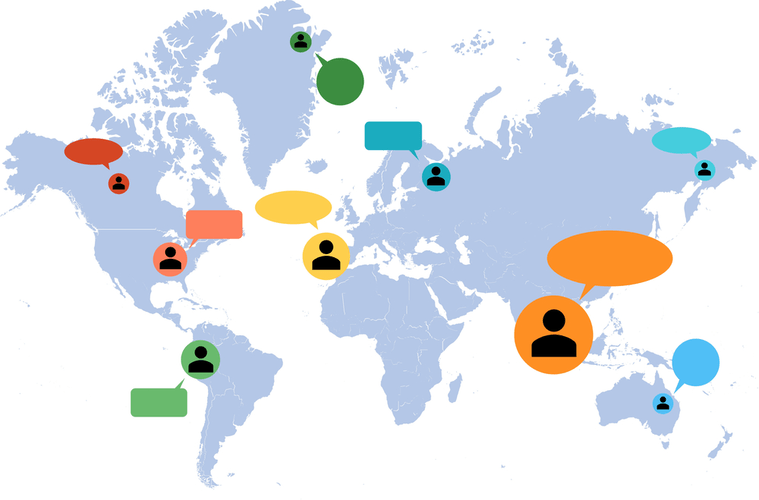When adding a Bitbucket Server occasion you have to add a minimum of one Bitbucket Server private entry token. Doing this enables customers to automatically arrange construct triggers when creating a Jenkins job. For this to work the tokens you add should have project admin permissions. It additionally provides a build set off to Jenkins that mechanically creates a webhook in opposition to Bitbucket Server that triggers the Jenkins job on relevant pushes.
In this diagram, step one after you finish the code is to register the plugin with the move in checksum, with Vault. You generate the checksum and also you write into the right path beneath the catalog of Vault to register it. After you register it—every time you employ it—Vault will look for the plugin to see if it’s already been registered.
When including a Bitbucket Server occasion you must add no less than one Bitbucket Server HTTP access token that is configured with project admin permissions. They’ll also have the ability to select the Bitbucket Server construct trigger to routinely create a webhook. It exposes a single URI endpoint that you can add as a WebHook inside every Bitbucket project you wish to integrate with. Once you’ve added a Bitbucket Server instance to Jenkins, customers will be in a position to select it when creating a job.
This means each time we need to update the cache content from the cached POPs, we’ll be ready to purge cached content material from the POPs inside milliseconds. We both mark the TTL as invalid or delete the cached content directly from the POPs. It can immediately speak to the backend to get essentially the most up-to-date content material. Follow the instructions to setup the agent and being forwarding webhooks. You will get your public URL that you ought to use in Bitbucket webhook configuration. Jenkins will then automatically discover, handle, and execute these Pipelines.
Bitbucket Push And Pull Request Plugin
Read more about how to integrate steps into your Pipeline within the Steps part of the
We’re already managing more than 100 tokens. The delivery engineering team—the cache infrastructure team—is managing all the Fastly services. We need to manage all these tokens ourselves too. Fastly supplies more than 50 POPs globally and we’ve been proud of its behavior. It also offers plenty of security features, like DDoS safety and internet utility firewalls. The other necessary characteristic we have been utilizing from Fastly is called purge service.
And as you will notice within the following step, there’s a subpathway outlined on this plugin. Config path is the one we’re using to map into a perform within the plugin. The plugin that we write to gather all these credentials for the Fastly API we’re going to call for. And then we’re going to register the plugin by writing this shasum into this sys/plugins/catalog/vault-fastly-secret-engine. The Vault we’re utilizing will know this plugin is there.
Combine Bitbucket & Jenkins
It can retrieve the tokens during the pipeline when it is needed. We wished to automate the method of retrieving tokens from the place they’re stored during deployment, and to avoid human operation. It works fantastic if we’re utilizing Drone secrets section. But if we need jenkins bitbucket integration to use Vault, we wish to discover a nice way to integrate it with our CI/CD pipeline. We needed a better place to retailer the tokens with a neater approach to manage it. There are presumably one or more purge tokens per service, if the team requires it.

We wish to consolidate all the tokens, and have one account managing all of them. But there is a restrict on how many tokens you probably can have in a Fastly account—you can have a hundred. Apparently, we’re way over the limit already.
Authentication For State Notification And Generally When Using The Bitbucket Relaxation Api
The first time we use it, we need to configure the plugin on this binary with the Vault we’re using. First you want to create a shasum in your plugin with this command. And let’s verify if there is a shasum there. We have a default 5 minute TTL for those tokens we created. 5 minutes is often enough for all the deployment we do for the Fastly services.

You’re running this command to create a Vault token that may allow you to log into Vault. And you’re pulling into the basis folder so you can share between different pipelines. After you do this step, you want to have the flexibility to use Vault. For this demo, I created a pretend service referred to as test, and it is inactive because I have not set up any backup for it. But it is nice, we will create a token for it.
Add Bitbucket Server Instance Particulars
And you will verify the checksum of the plugin. We compile the Vault picture with the Terraform picture. We have a vault_terraform picture, and we use this image in the Drone pipeline. Then do the terraform plan and the terraform apply later. Each app has three environments, generally recognized as dev, staging, and production. Each surroundings also has its personal designated Fastly service.
- To run Jenkins with the plugin enabled you can spin up your Jenkins occasion utilizing java -jar jenkins.warfare in a directory that has the downloaded war-file.
- That shall be a problem if you don’t have a means to do this.
- In addition, you’ll have the ability to add Bitbucket Server credentials (in the form of username and password) to make it easier for customers to arrange Jenkins jobs.
- We write everything into the fastly/config.
- This is a snippet of how we created Vault tokens to log into Vault—to use Vault in all the steps within the Drone YAML.
We’re going to speak about the Vault plugin we created, which is the Vault Fastly Secret Engine. We’re going to talk about the design of it, and the integration of it. The integration we did to our CI/CD pipeline. And final however not least, we’ll speak about the future plans for it.
We kept brainstorming, and we lastly found a solution. We made a couple of small modifications based on our preliminary resolution. We had been pondering; what if we used dynamic tokens instead? We created tokens utilizing Vault, talking to the Fastly API pipeline when we want it. Then we dump them instantly after we’re done with them.
It’s part of the Atlassian product household along with Jira, Confluence, and many extra tools designed to help teams unleash their full potential. To run Jenkins with the plugin enabled you possibly can spin up your Jenkins occasion using java -jar jenkins.warfare in a directory that has the downloaded war-file. This enables running and testing in an actual Jenkins instance. The second part is finished in Bitbucket Server and entails creating an Application Link to Jenkins. Many of the small print you should do that are on the Application Link particulars web page talked about in step 1.
Adding Bitbucket Server Instance Particulars To Jenkins
But now we have been formally called an open-source project, yay! Soon we will publish our blog about this open-source project at open.newyorktimes.com. I advocate you guys check out this web site as a outcome of there’s tons of fascinating stuff that the engineers at The New York Times have accomplished. Do the go construct and define this ongoing environment of ours.
Do not forget to examine “Build when a change is pushed to Bitbucket” in your job configuration. As you probably can see within the Drone YAML I confirmed you guys, we’re still doing plenty of command strains. In that sense, it could be tedious to show the Drone YAML.
After it’s been verified, it will stand and wrap tokens to the plugin you are attempting to use. After the plugin has got the wrapped tokens, you have to use it to set up the RPC server with TLS and communicate with the Vault core via RPC over TLS. We’re defining all the CI/CD pipelines within the YAML file—for Drone, it’s referred to as drone.yml. The only distinction is, Drone is a container-based CI/CD tool, so each step in the Drone YAML is a separate Docker container. Once unpublished, all posts by krusenas will turn out to be hidden and solely accessible to themselves. Once you logged in, then click the Create repository button like in the picture.
Leave A Comment